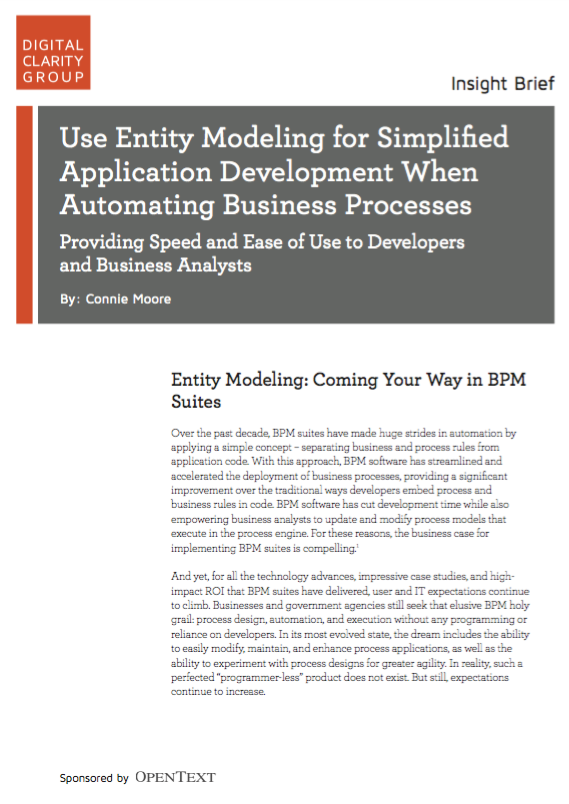Use Entity Modeling for Simplified Application Development During Business Process Automation

Over the past decade, business process management (BPM) suites have made huge strides in automation by applying a simple concept – separating business and process rules from application code. With this approach, BPM software has streamlined and accelerated the deployment of business processes, providing a significant improvement over the traditional ways developers embed process and business rules in code. BPM software has cut development time while also empowering business analysts to update and modify process models that execute in the process engine. For these reasons, the business case for implementing BPM suites can be compelling.
But user and IT expectations continue to rise, as automating customer-facing processes becomes part of the BPM landscape. Businesses and government agencies still seek that elusive BPM holy grail: process design, automation, and execution without any programming or reliance on developers. In its most evolved state, the dream includes the ability to easily modify, maintain, and enhance process applications, as well as the ability to experiment with process designs for greater agility.
In this paper, Connie Moore suggests that entity modeling can play a key part in making that dream a business reality. She describes entity modeling, highlights the business value, and outlines next steps for assessing its potential impact.
Download now







